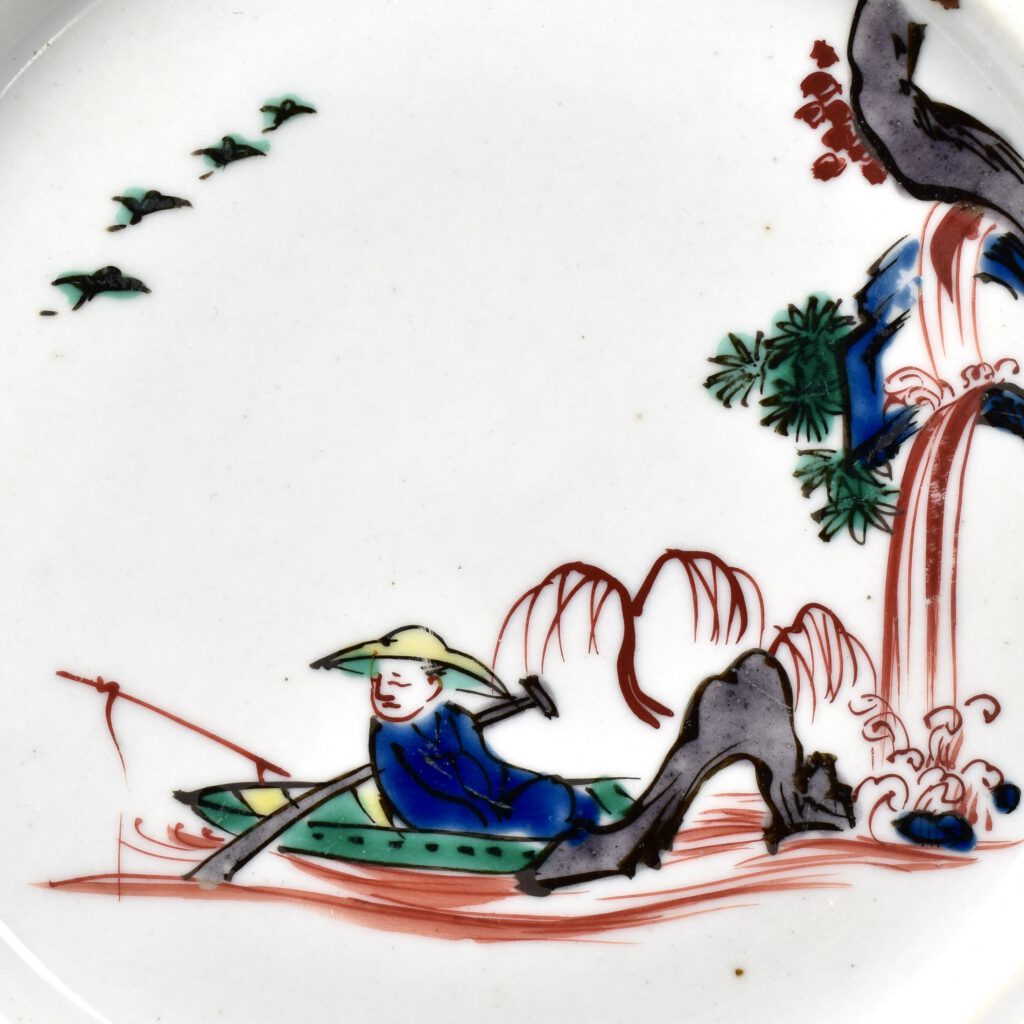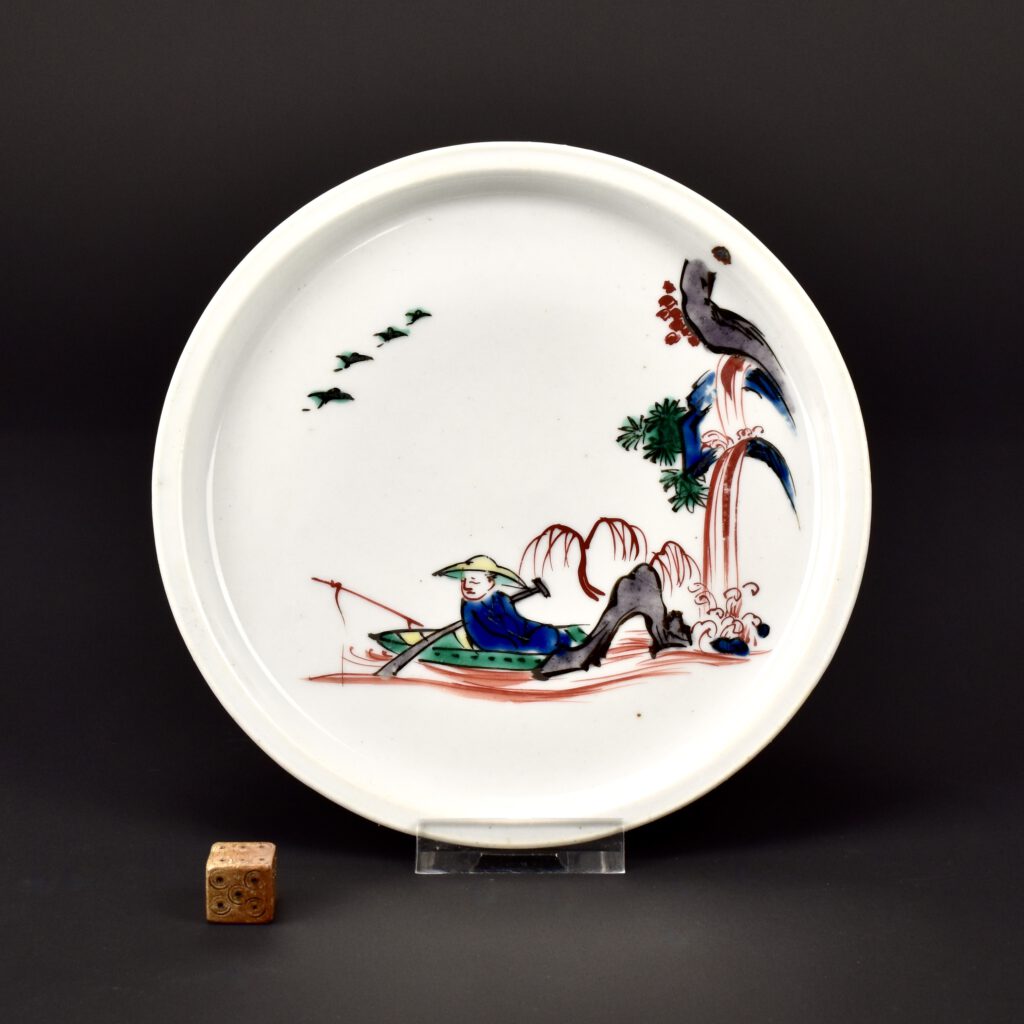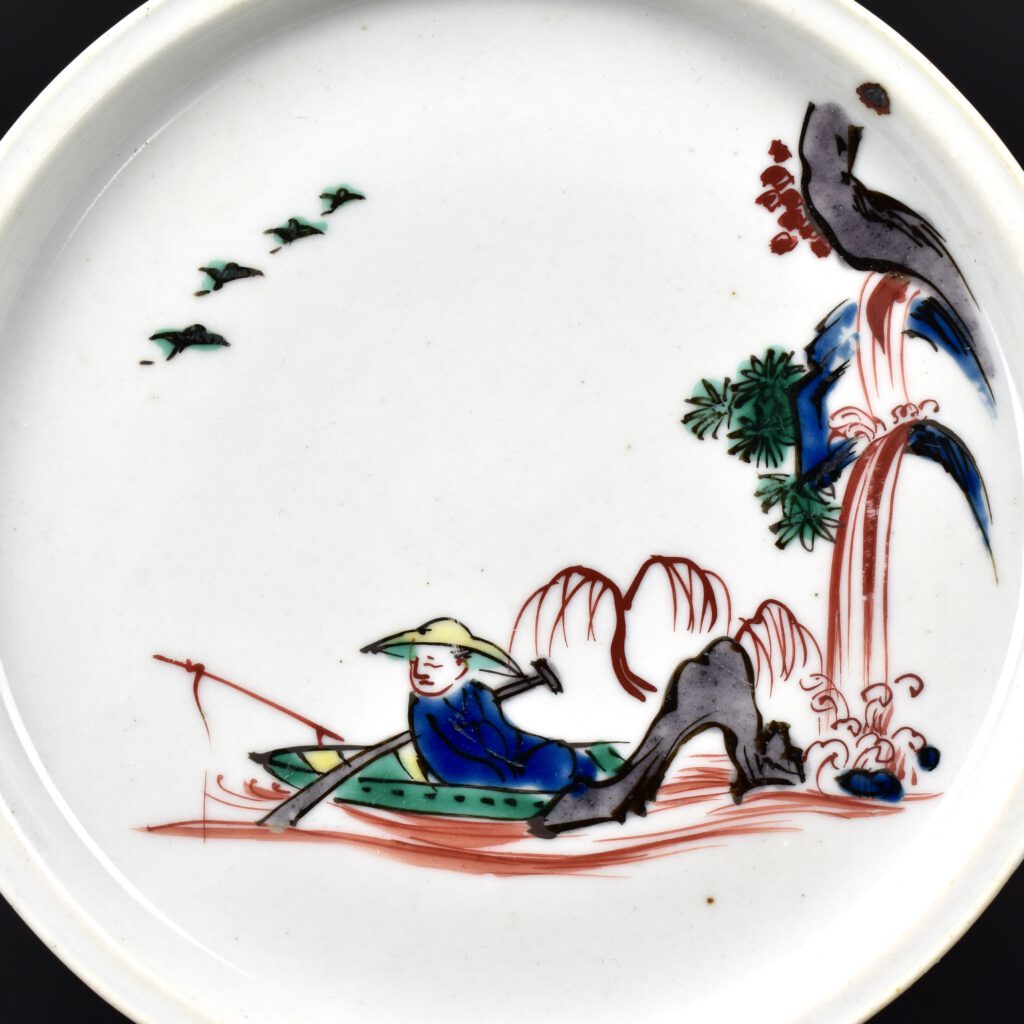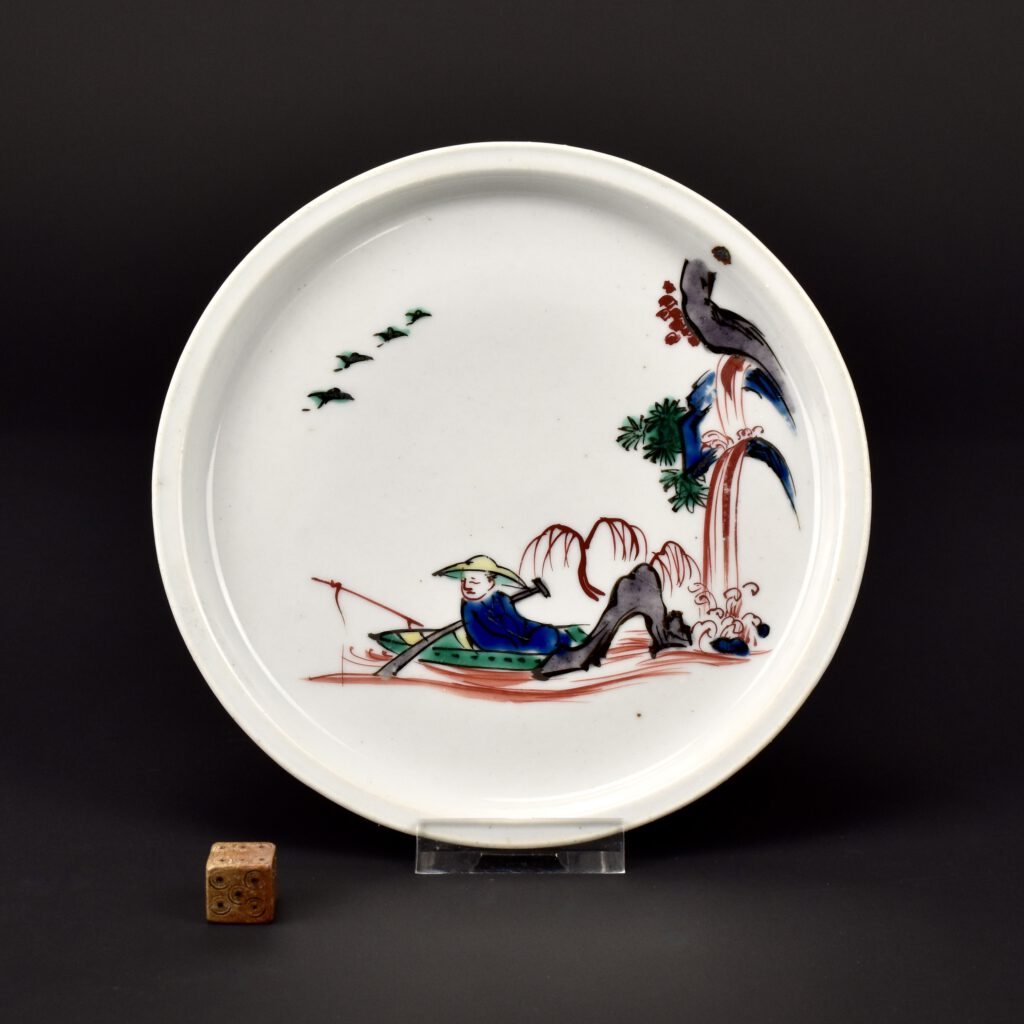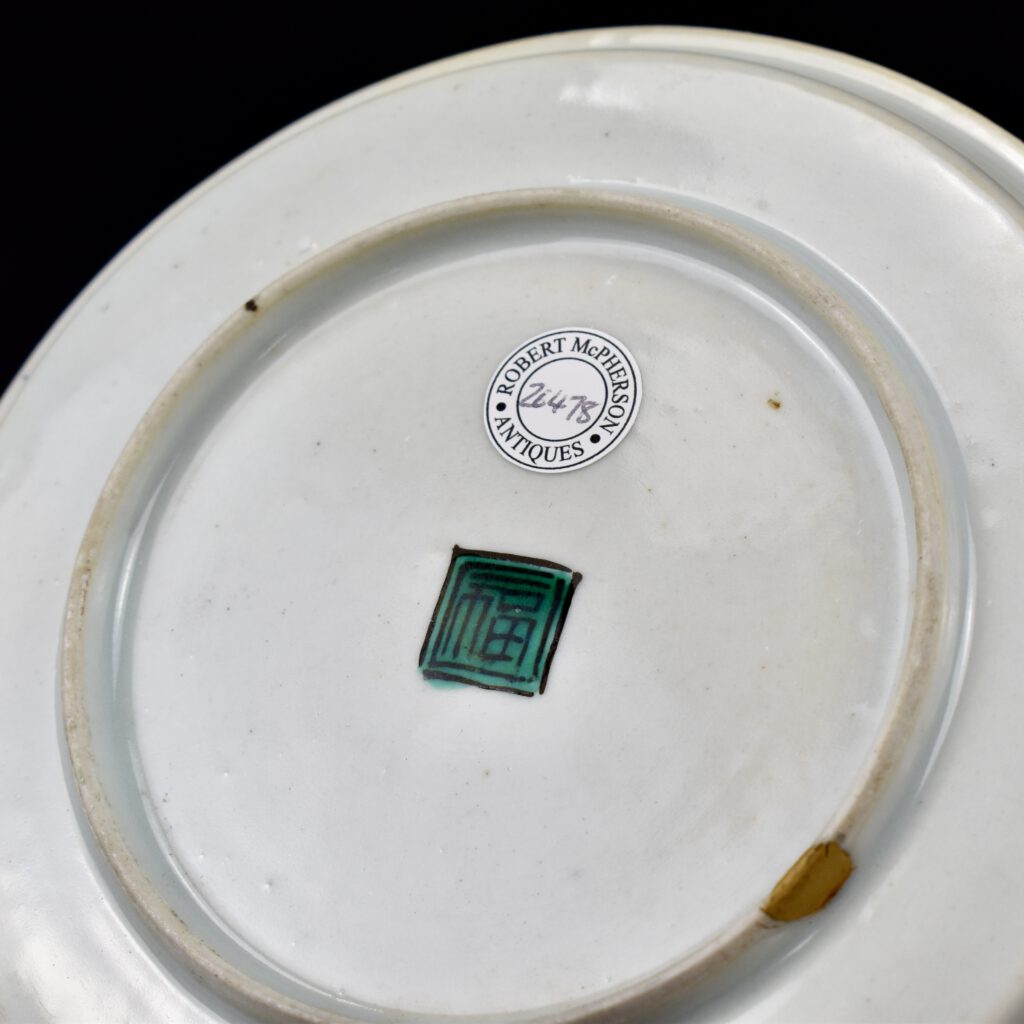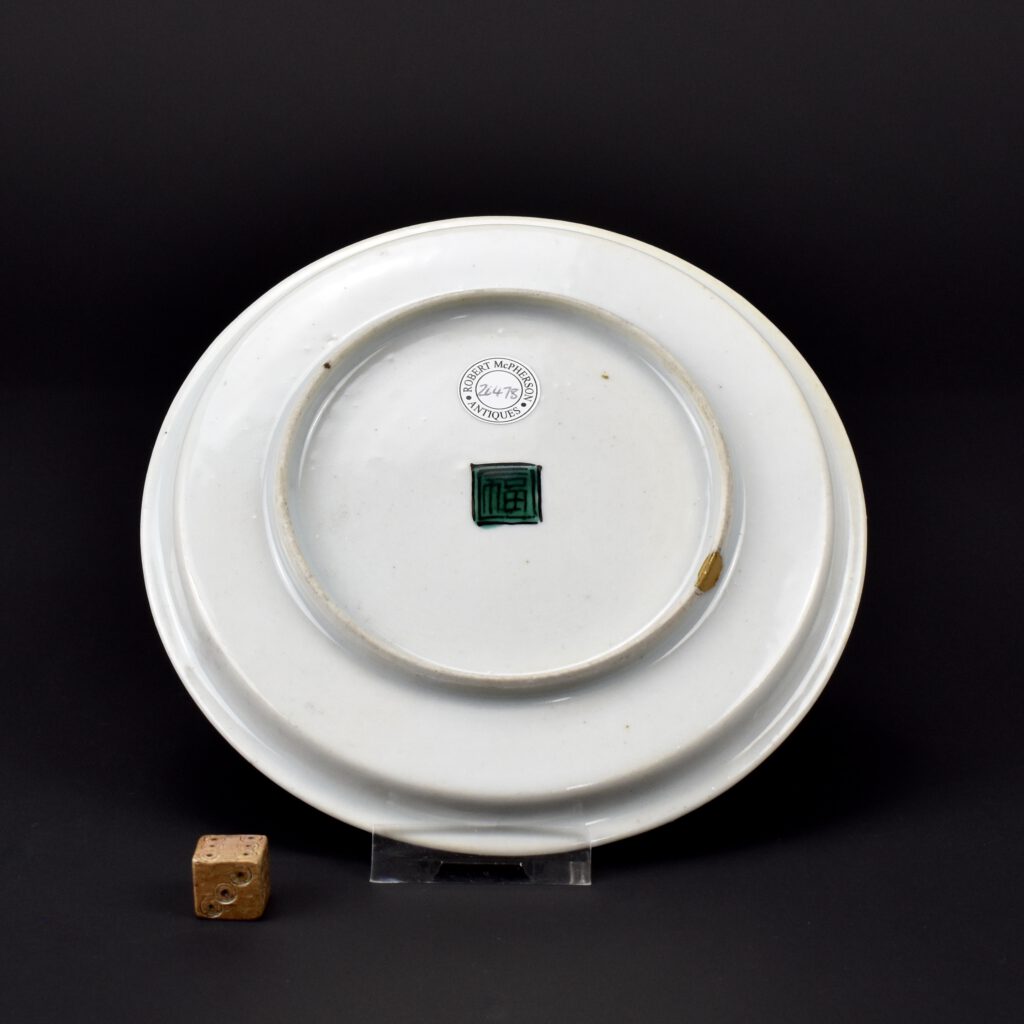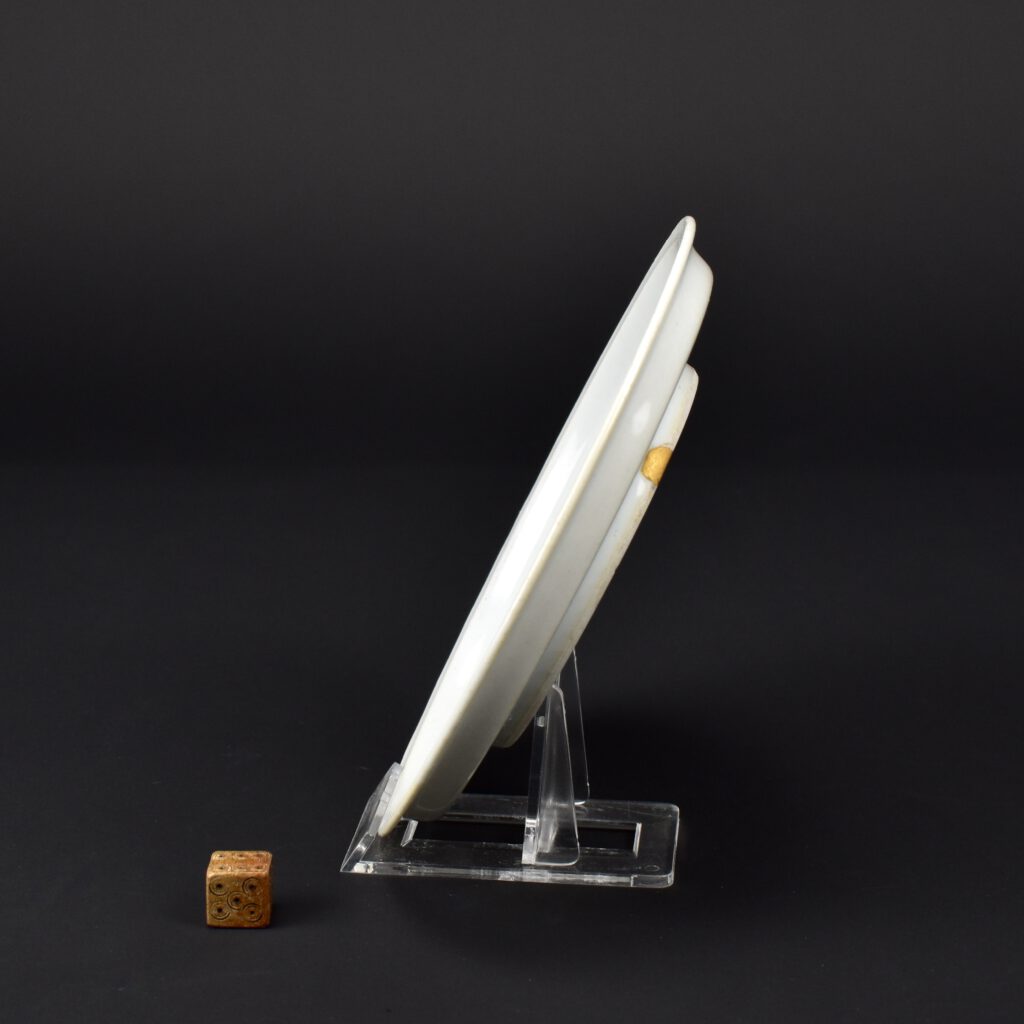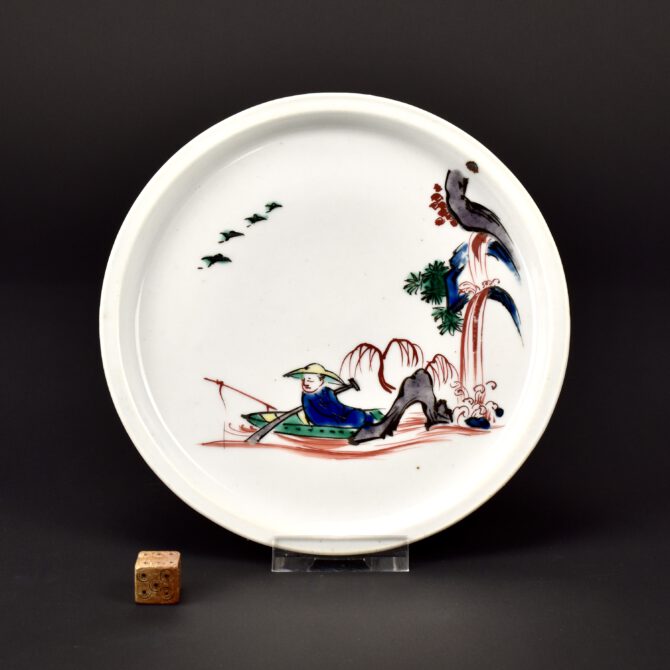
A 17th Century Ko-Kutani Style Dish
A Ko-Kutani Style Dish Porcelain Dish, Arita Kilns c.1650 – 1660. Enamelled Japanese porcelain of this type was thought to have been made at kilns in Enuma County, Ishikawa Prefecture, Japan but it is now known to have been made at Arita. So, this type could be called Arita porcelain in Ko-Kutani style. This small flat porcelain dish, with a narrow everted rim, is typical of early Japanese enamelled porcelain dating to the 1650’s. The painting is free but assured, using strong colours it creates a vivid atmospheric scene. A fisherman looks down at the moving water, with his simple fishing rod in front of him, attached to the side of the modest vessel, he is still in a landscape full of movement. Above are four birds in flight, to the right is a waterfall of crashing iron-red water and blue enamel rocks. A section of a tree in aubergine and black enamel is above the waterfall and another section of tree, submerged, can be seen between the falling water and the boat, a willow in iron-red is behind. The base has a black seal type mark, over enamelled in translucent green enamel. This type of mark is typical of 17th century Kutani style pottery and porcelain but much copied in the 19th and 20th century.
See below for more photographs and references.
SOLD
- Condition
- There is Kintsugi, ‘golden joinery’, repaired chip to the footrim.
- Size
- Diameter 14.5 (5 3/4 inches). 6mm in Depth.
- Provenance
- N/A
- Stock number
- 26478
Information
Kintsugi
Kintsugi, ‘golden joinery’, also known as Kintsukuroi ‘golden repair’ is the Japanese technique of repairing broken pottery with laquer dusted or mixed with powdered gold, silver or platinum. As a philosophy, it treats breakage and repair as part of the history of an object, rather than something to disguise. Lacquerware is a longstanding tradition in Japan, and at some point kintsugi may have been combined with maki-e as a replacement for other ceramic repair techniques. One theory is that kintsugi may have originated when Japanese shogun Ashikaga sent a damaged Chinese tea bowl back to China for repairs in the late 15th century. When it was returned, repaired with ugly metal staples, it may have prompted Japanese craftsmen to look for a more aesthetic means of repair. Collectors became so enamored with the new art that some were accused of deliberately smashing valuable pottery so it could be repaired with the gold seams of kintsugi. Kintsugi became closely associated with ceramic vessels used for chanoyu (Japanese tea ceremony). While the process is associated with Japanese craftsmen, the technique was also applied to ceramic pieces of other origins including China, Vietnam, and Korea.
